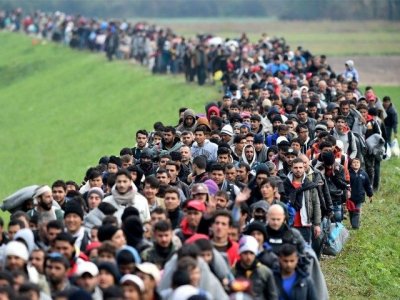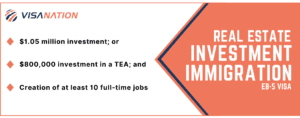Yet Another Legal Migration Pathway Meant to Deter Illegal Ones
The Biden administration recently issued a statement to introduce a new “Legal Pathways Initiative with Mexico” allowing nationals of Cuba, Haiti, Nicaragua, and Venezuela who made it to Mexico to be admitted into the United States as refugees. By expanding “access to safe, orderly, legal migration pathways” to the United States, and “in line with the goals of the Los Angeles Declaration on Migration and Protection”, this administration hopes to reduce illegal entries and discourage migrants from “putting their lives in the hands of dangerous smugglers and traffickers”.
Unlike previous pathways that offered temporary lawful presence in the United States to nationals of those four countries through parole, this one gives access to U.S. citizenship. It also follows directives of the United Nations and other international agreements. In fact, one of the four pillars of the aforementioned Los Angeles Declaration on Migration and Protection (whose goal is “to mobilize the entire region around bold actions that will transform our approach to managing migration in the Americas”) is the “expansion of legal pathways” for migrants.
The statement on the legal pathways initiative underlined the Biden administration’s full support “for an international multipurpose space that the Government of Mexico plans to establish in southern Mexico to offer new refugee and labor options for the most vulnerable people who are currently in Mexico”, while committing to accept refugee resettlement referrals from qualified individuals from Cuba, Haiti, Nicaragua, and Venezuela who are there.
But if Mexico agreed to give refugee status and employment opportunities to vulnerable individuals on its soil, why the need for resettlement in the United States? Could it be a case of “burden sharing” and “family reunification” (both strategies advocated by the United Nations), rather than persecution? (what persecution in Mexico?)
The Mexican government decided to set up a service center on its border with Guatemala to offer jobs and resettlement options for people from Cuba, Haiti, Nicaragua, and Venezuela in line with its commitment made on June 10, 2022, under the Los Angeles Declaration on Migration and Protection:
Mexico will integrate 20,000 recognized refugees into the Mexican labor market over the next three years. With the support of UNHCR, the program would connect individuals with legal status as recognized refugees in Mexico to work opportunities in regions with labor shortages. A joint initiative with UNHCR, the private sector and the Mexican Government, both refugees and firms will benefit from successful integration into Mexico’s formal labor market.
There’s also another context. With the U.S. government requiring migrants to make appointments through the CBP One App to be able to claim asylum instead of just showing up at the southern border, many who had already begun their travel to the U.S. border found themselves stuck in Mexico. This center to be set up by the Mexican government is meant to help these people.
Mexico’s Foreign Relations Department explained how the new center “would provide refugee services, and … employment options to connect migrants with the big projects being built”. These projects in the area include a tourist train line, a string of industrial parks, and an oil refinery. According to reports, the U.S. government has also agreed to contribute $40 million to help finance two Mexican programs Mexico is wanting to expand to Central America.
As previously mentioned, this is not the first “lawful pathway” designed by the Biden administration for nationals of these four countries. The major difference, this time, pertains to the assigned immigration status: This new pathway allows them to enter as refugees, while the previous ones were only allowed entry as parolees.
This is important because, unlike parolees whose status is, in theory, temporary, refugees are granted permanent resettlement. Per U.S. immigration law, resettled refugees are required to apply for a green card one year after arrival and can apply for citizenship four years later (not five, as the five-year count for refugees starts on the day of arrival). On the other hand, while immigration parole allows for temporary lawful presence in the United States, it does not provide any immigration status or path to lawful permanent residence (a green card) or another lawful immigration status. Parolees are admitted into the United States for an initial period of one to two years (usually renewable) and they have access to employment authorization and Social Security numbers. Moreover, parolees, unlike resettled refugees, have limited access to benefits and services (exceptions were made for Ukrainian and Afghan parolees who have been given the same benefits as refugees).
Moreover, under the “Welcome Corps”, a new private sponsorship program designed by the Biden administration to resettle refugees, private individuals in the United States (including newly resettled refugees with green cards) will be able to choose which refugees (family members and/or acquaintances) will get a chance to join them here.
Back in October 2022, a “Process for Venezuelans” was put in place by the Biden administration to discourage Venezuelans “fleeing the humanitarian and economic crisis” from illegally entering the United States through the Southwest border. The process was designed to give 24,000 Venezuelans access to the United States under parole.
The Parole Process for Venezuelans was modeled on the Uniting for Ukraine program created by the Biden administration following Russia’s invasion to offer Ukrainians a chance to come to the United States via parole. The process allowed certain Venezuelans and their immediate family members to come to the United States under parole (for a period of two years) and apply for employment authorization, provided U.S.-based parties (sponsors) agree to support them financially during their stay here.
“U.S.-based supporters” for these parole programs are not only U.S. nationals, citizens, or lawful permanent residents (green card holders, including conditional green card holders); other individuals lawfully present in the United States can also act as sponsors, such as asylees, refugees, and parolees; Temporary Protected Status (TPS) holders; and beneficiaries of deferred action (including DACA) or Deferred Enforced Departure (DED).
The parole program for Venezuelans was later expanded to include Cubans, Haitians, and Nicaraguans. On January 5, 2023, DHS announced it was “establishing new parole processes for Cubans, Haitians, and Nicaraguans, modeled on the successful processes for Venezuelans and Ukrainians”. This new program is capped at 30,000 individuals per month. This means that Venezuelan, Cuban, Haitian, and Nicaraguan parolees, TPS holders, DEDs, DACAs, and others from the list above can sponsor their friends and family members to come join them in the United States.
President Biden’s expansion of legal pathways into the United States follows many international guidelines. It is in line with the goals of the Los Angeles Declaration on Migration and Protection, which “builds upon existing efforts and international commitments and advances the vision set forth in the Global Compact on Refugees and the Global Compact for Safe, Orderly and Regular Migration (GCM) anchored in the 2030 Agenda for Sustainable Development”, and through which adhering member states reaffirm their shared commitment to:
supporting host communities; strengthening and expanding regular pathways and access to international protection; fostering opportunities for decent work; facilitating regularization and access to basic services; and promoting principles of safe, orderly, humane, and regular migration.
It is also based on the directives of the 2016 New York Declaration for Refugees and Migrants that was adopted by UN member states (including the United States under the Obama administration). In accordance with this New York Declaration, member states agreed to:
consider the expansion of existing humanitarian admission programmes, flexible arrangements to assist family reunification, private sponsorship for individual refugees and opportunities for labour mobility for refugees, including through private sector partnerships, and for education, such as scholarships and student visas.
Two separate UN compacts were set in motion following the New York Declaration for Refugees and Migrants: the Global Compact for Safe, Orderly and Regular Migration and the Global Compact on Refugees (both compacts were officially adopted in December 2018). President Trump refused to endorse either compact at the time, deeming them incompatible with U.S. sovereignty.
On December 17, 2021, the Biden administration released a “Revised National Statement of the United States of America on the Adoption of the Global Compact for Safe, Orderly and Regular Migration”, in which it announced its “endorsement of the vision contained in the Global Compact for Safe, Orderly and Regular Migration (GCM)”. One of GCM’s objectives is stated as such:
Expanding and diversifying availability of pathways for safe, orderly and regular migration, taking into account the particular needs of migrants in situations of vulnerability.
The question remains: How many additional back-door entries should the U.S. government create to admit all the migrants who want to come here? And will those succeed in significantly curbing the endless breaches of the border?
But more importantly, why design legal entries for illegals, and why allow those who are here unlawfully or “temporarily” to sponsor others to join, knowing that few, if any, will ever leave?






